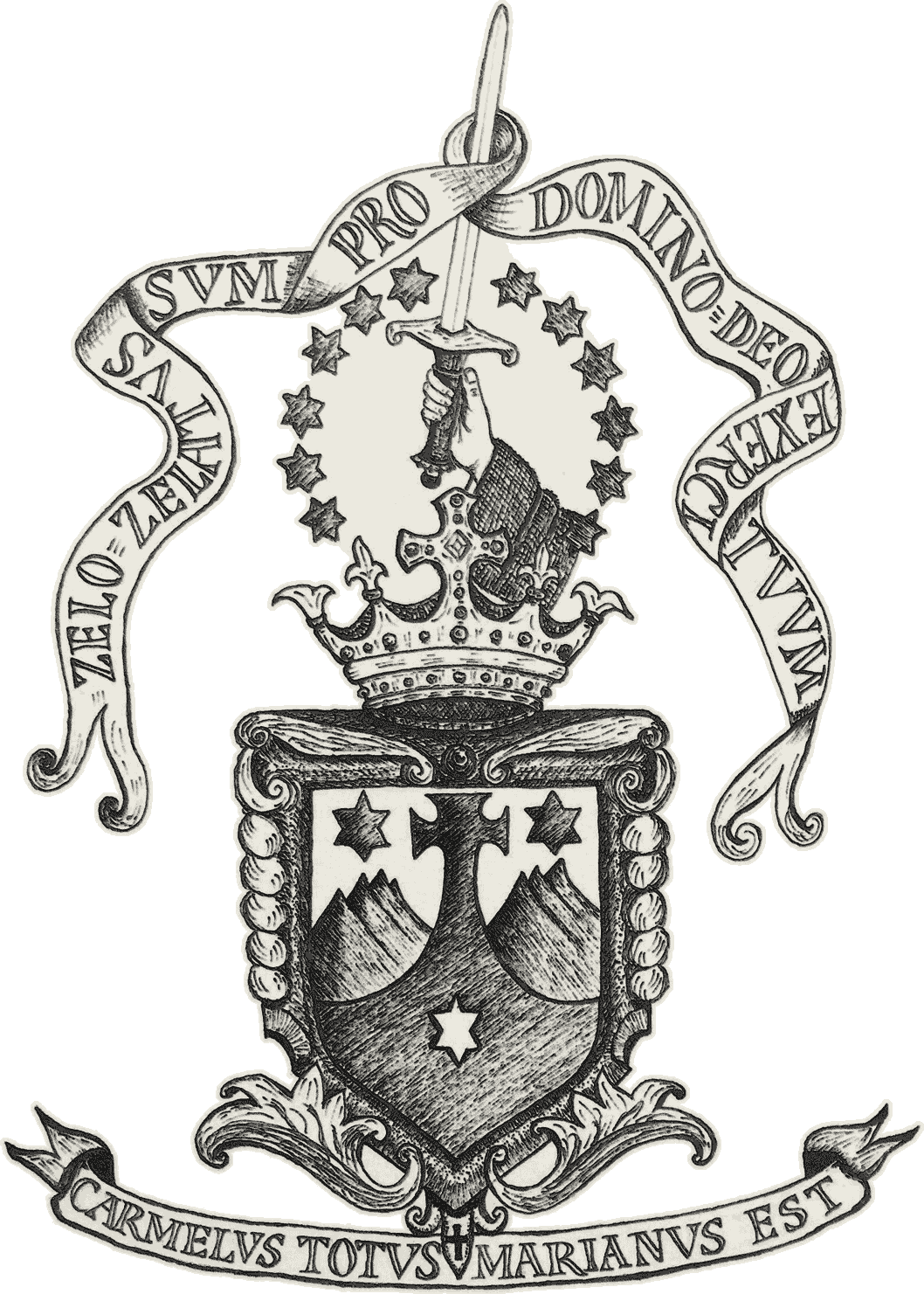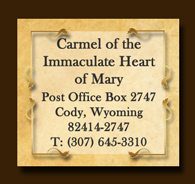The august sacrifice of the altar is, as it were, the supreme instrument whereby the merits won by the divine Redeemer upon the cross are distributed to the faithful: As often as this commemorative sacrifice is offered, there is wrought the work of our Redemption.
(Mediator Dei)
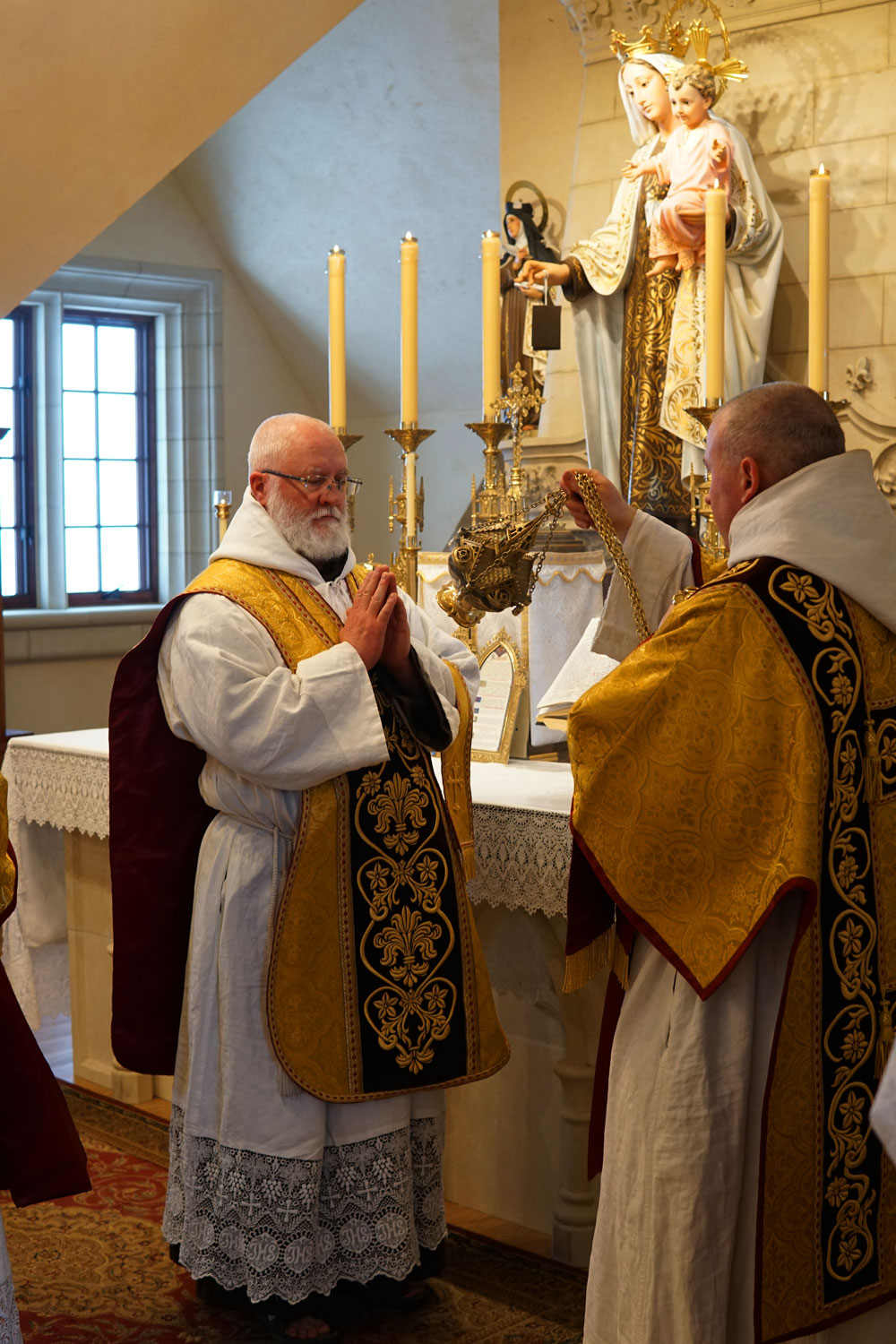
Following the example of the first hermits on Mount Carmel, the Carmelite monks gather each morning for a Solemn Conventual Mass. Beginning with a chanted invocation of the Holy Spirit, the monks humbly enter into a realm more of heaven than of earth. As ancient chants and sweet smelling incense fill the air, the monks, united to Our Lady, offer praise, thanksgiving, and adoration to the Most Blessed Trinity and intercede for the needs of the Church and their spiritual children.
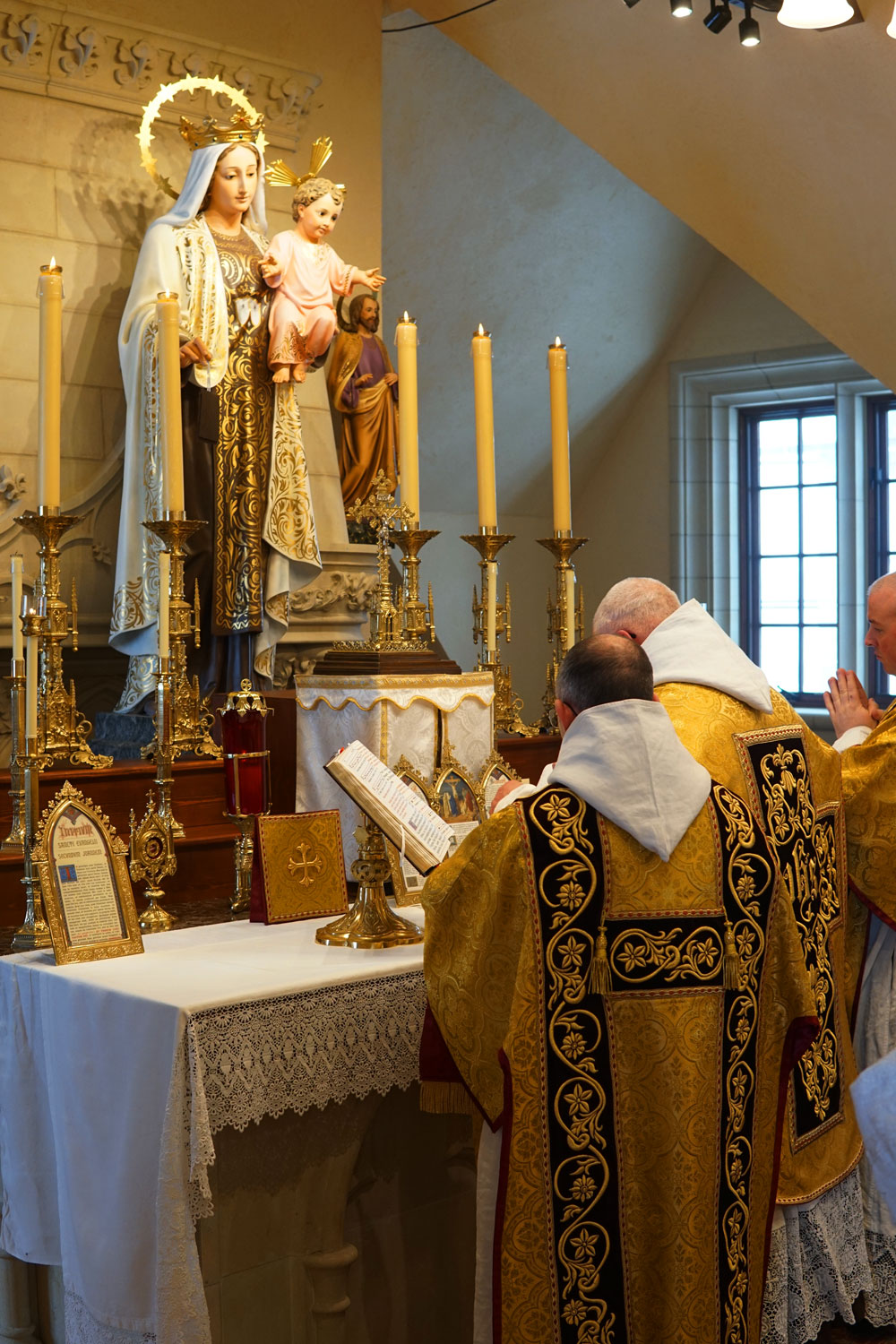
The Holy Sacrifice of the Mass is the source and summit
of the monks religious life. No higher action is possible in this life than loving reverent worship of God at Holy Mass. Who better carried out this sacred duty than the Blessed Virgin Mary? In forming us for worship she constantly tells her Carmelite brothers, Do whatever He tells you.
(John 2:5)
At Mass we see Our Lord speaking, guiding and instructing us through all those sacred actions of the Carmelite Rite. The recurring emphasis on the Cross, seen for example when the priest holds out his arms cruciform following the consecration, reminds the monk of the privileged call and solemn duty he has to be conformed to his Crucified Lord. Though the Cross can be heavy at times, the monk is strengthened at Mass, like the Apostle John, by being ever present at the side of Mary, his beloved Mother.
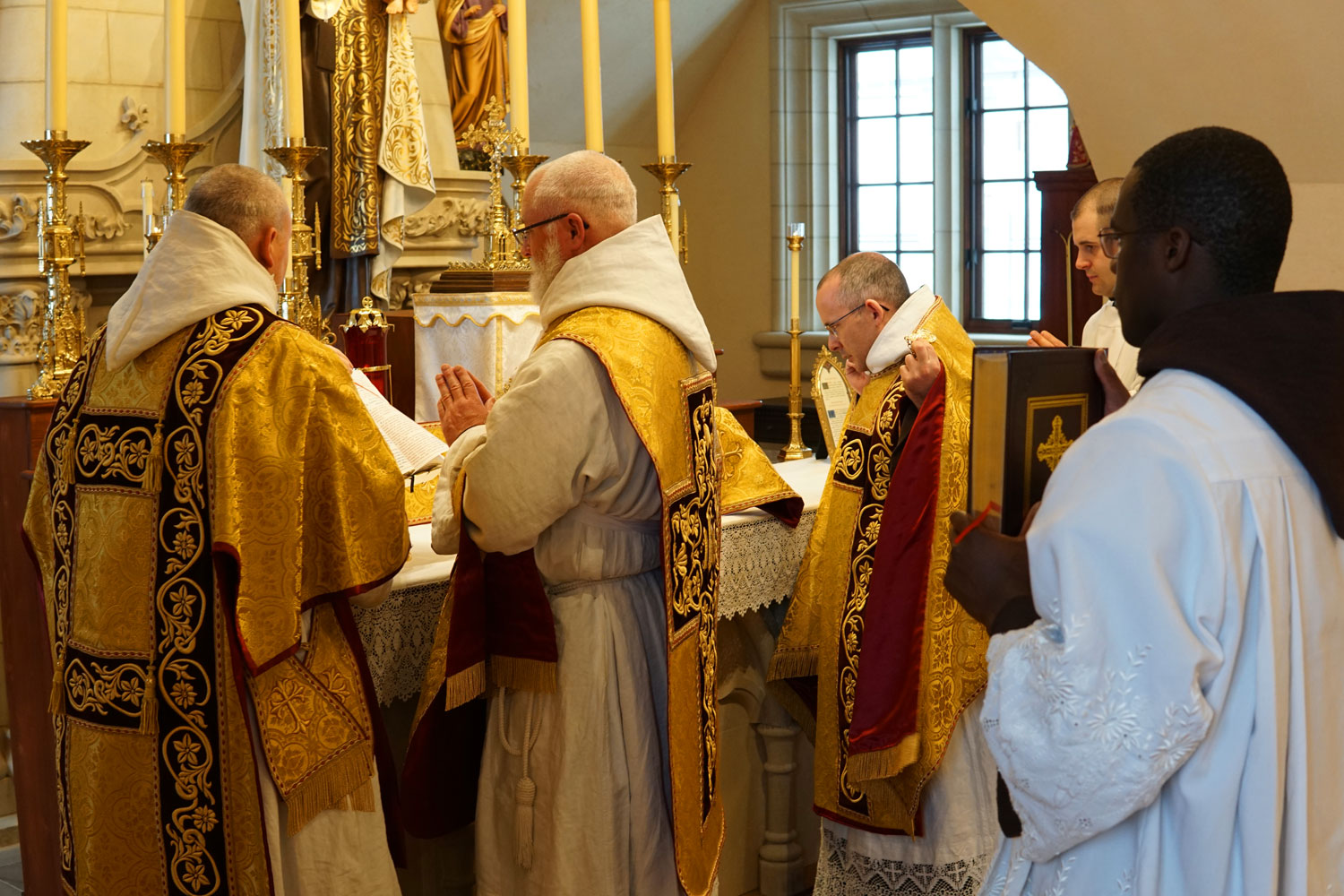
Our Lord has given the monks the particular vocation in the Church to honor, love and imitate His Mother, and thus become His true and intimate friends. This mission is especially fulfilled in the Carmelite Rite Mass. Our Lady is honored especially through the Marian elements. The Salve Regina is an integral part of the Mass, coming before the Last Gospel, and reminding the monk of his unique call in the Church to perpetuate the veneration and imitation of Our Blessed Mother in the Church. Particular to the Carmelite Rite as well is the brief silent prayer said before the proclamation of the Gospel, when the deacon briefly bows his head to acknowledge Our Lady's role in the Incarnation. The abundance of Marian feasts, such as the Expectation of the Blessed Virgin Mary on December 18th, the Purity of the Blessed Virgin Mary on October 16th, and the Espousals of the Blessed Virgin Mary on January 23rd all confirm the monks' unique role in the Church to honor, love and especially imitate the beauty and queen of Carmel. However it is not just these feasts, but nearly every Saturday of the year, when in Carmel the monks have a privileged Mass in honor of Mary, the love of their hearts.
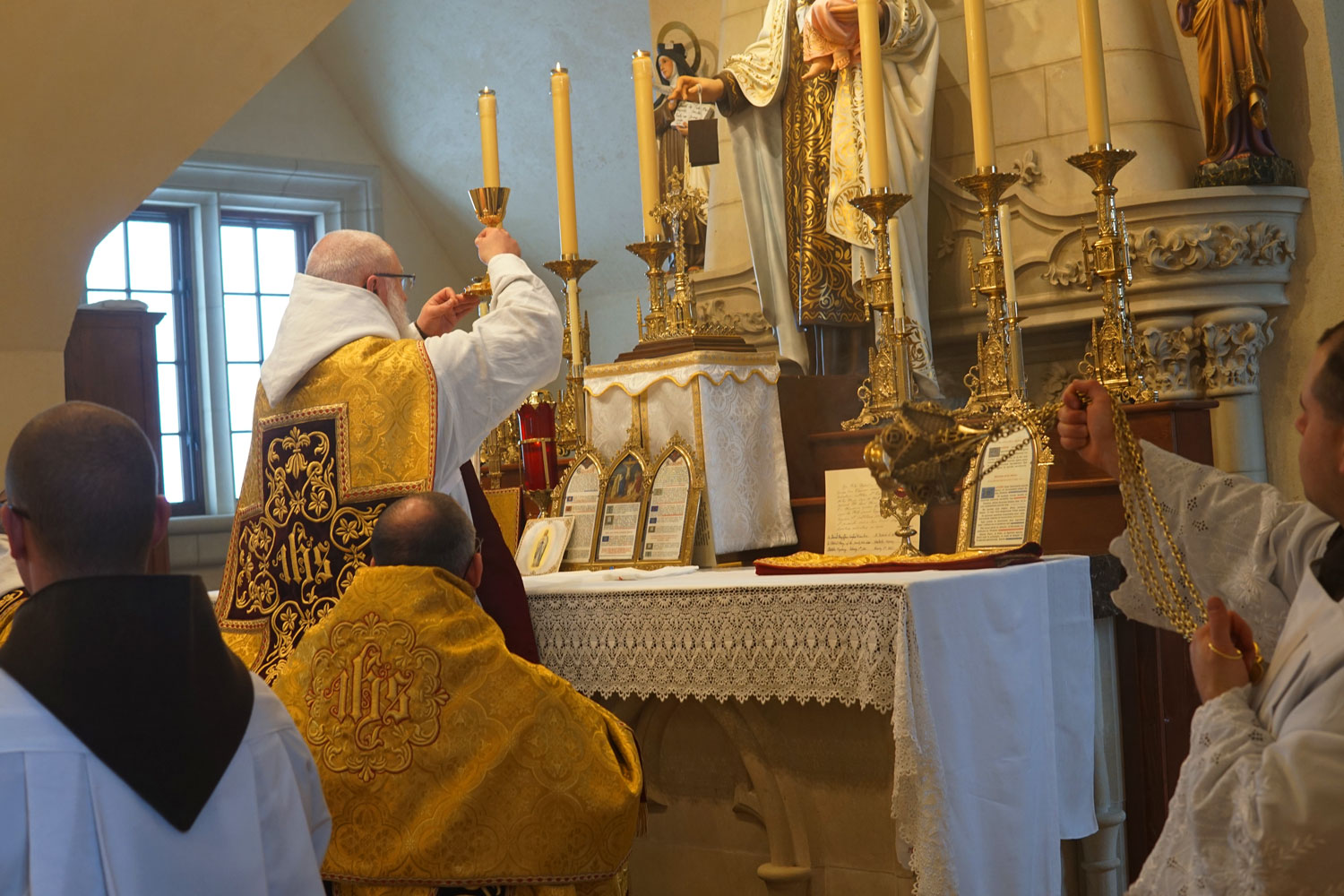
In the Holy Sacrifice of the Mass the fathers and brothers find themselves profoundly united through the reception of Holy Communion, where they are made one in Christ. In a very unique way, when the monk engages in the ascending and descending mediation of Christ in the Liturgy, he mediates grace to souls throughout the entire world and in this manner continues the mystical apostolate of our Lady becoming love in the heart of the Church.
(St. Therese)
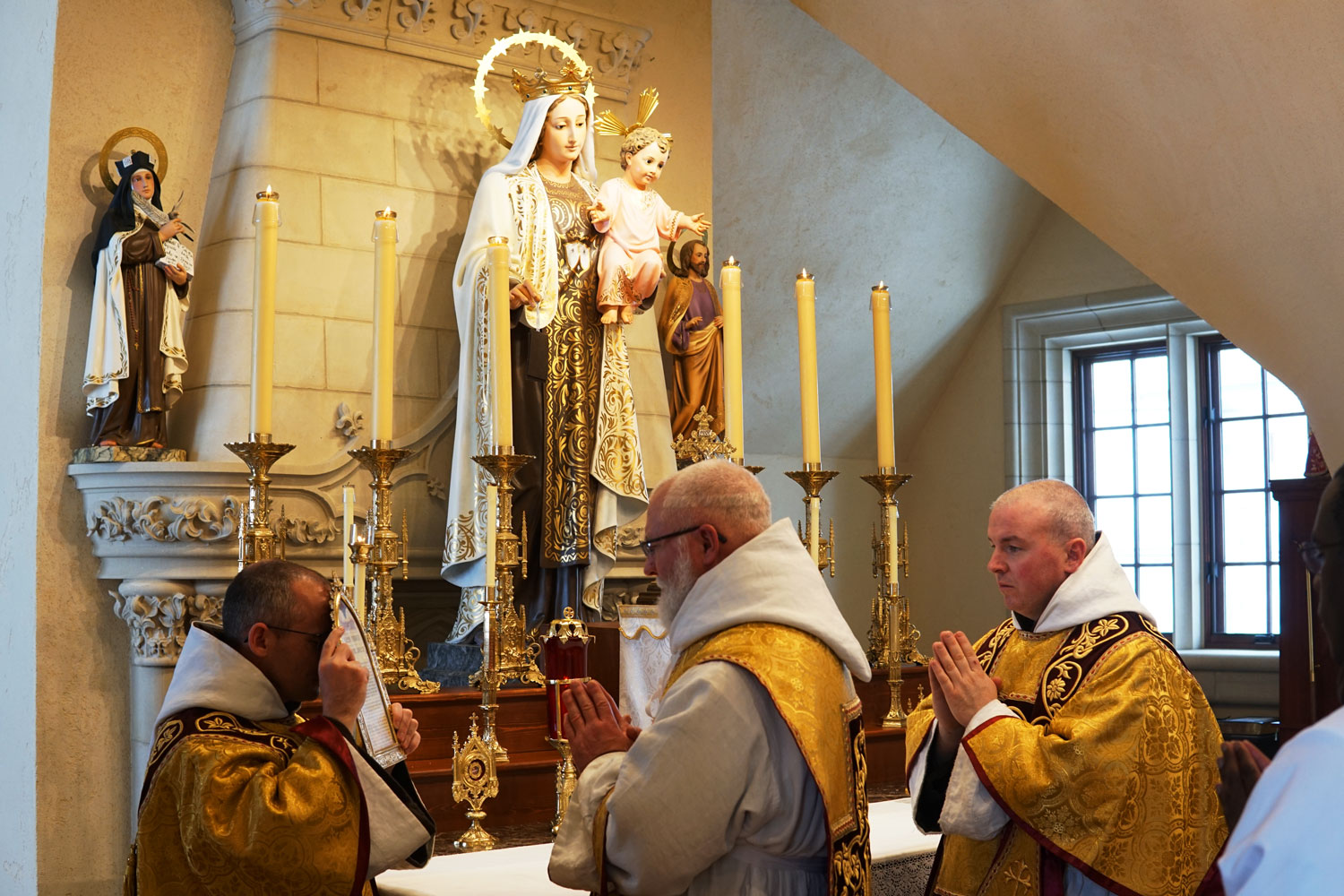
The Mass is the sacrifice of thanksgiving par excellence, the one which allows us to unite our own thanksgiving to that of the Savior, the Eternal Son of the Father. In the Mass, we want to belong only to Christ and we take up with gratitude with thanksgiving the cry of the psalmist: How shall I repay the Lord for his goodness to me?
(Psalms 116:12). Yes, how can I give thanks to the Lord for the life he has given me?
The answer to the psalmist's question is found in the psalm itself, since the word of God responds graciously to its own questions. How else could we render thanks to the Lord for all his goodness to us if not by attending to his own words: I will raise the cup of salvation, I will call on the name of the Lord
(Psalms 116:13) (Pope Benedict XVI).
